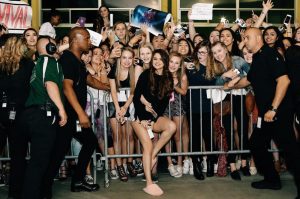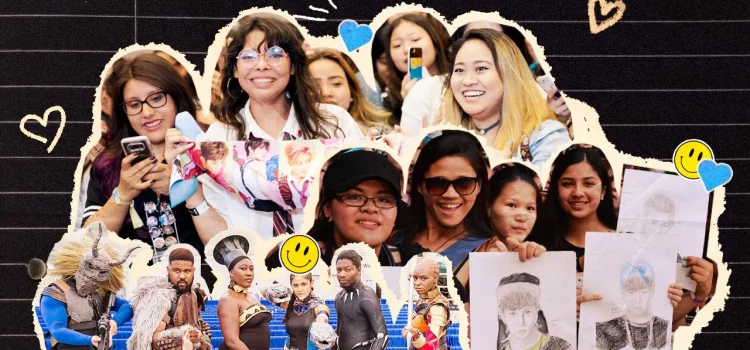
Introduction
Fan culture has evolved into a powerful force in the entertainment industry, shaping content in ways that were unimaginable just a few decades ago. From the early days of fan clubs and fanzines to the modern era of social media and online communities, fans have always played a crucial role in the success and longevity of entertainment properties. This article explores the multifaceted ways in which fan culture influences entertainment content, highlighting key examples and trends.
The Evolution of Fan Culture

-
Early Fan Communities
Fan culture has its roots in the early 20th century, with the rise of science fiction and fantasy genres. Fans of these genres formed clubs, wrote letters to each other, and published fanzines to share their passion. These early fan communities were instrumental in creating a sense of belonging and shared identity among enthusiasts.
-
The Internet Revolution
The advent of the internet in the late 20th century revolutionized fan culture. Online forums, chat rooms, and fan websites allowed fans to connect on a global scale. This digital transformation enabled fans to share their thoughts, theories, and creative works more easily, fostering a more interactive and dynamic fan culture.
-
Social Media and Streaming Platforms
In the 21st century, social media platforms like Twitter, Facebook, and Instagram, along with streaming services like Netflix and YouTube, have further amplified the voice of fans. These platforms provide direct channels for fans to communicate with creators and other fans, making fan culture more influential than ever before.
The Impact of Fan Culture on Entertainment Content

-
Content Creation and Development
One of the most significant ways fan culture influences entertainment content is through direct feedback. Creators and producers often monitor fan discussions to gauge reactions to their work. This feedback can lead to changes in ongoing series, the revival of canceled shows, or the development of new content that aligns with fan interests.
Case Study: “Firefly” and “Serenity”
The short-lived TV series “Firefly” is a prime example of fan culture’s impact on content development. Despite its cancellation after one season, the show’s passionate fan base, known as “Brown coats,” campaigned tirelessly for its return. Their efforts culminated in the release of the film “Serenity,” which continued the story of “Firefly.”
-
Fan Theories and Speculations
Fan theories and speculations can also shape the direction of entertainment content. Creators often take note of popular fan theories and may incorporate elements of these theories into their work, either as a nod to the fans or as a way to subvert expectations.
Case Study: “Game of Thrones”
The television series “Game of Thrones” saw extensive fan speculation about its plot twists and character arcs. While some fan theories were debunked, others were eerily accurate, influencing the narrative direction and engaging the audience in a deeper way.
-
Fan Art and Fan Fiction
Fan-created content, such as fan art and fan fiction, can significantly impact the entertainment landscape. These creative expressions not only keep the fan community engaged but also inspire official content creators.
Case Study: “Harry Potter” Fan Fiction
The “Harry Potter” series has inspired an extensive body of fan fiction, some of which has gained significant attention. For example, “Harry Potter and the Methods of Rationality” is a popular fan fiction that reimagines the original story. Such works not only keep the fan base active but also demonstrate the enduring appeal of the original content.
-
Merchandise and Spin-offs
Fan culture also drives the demand for merchandise and spin-off content. Fans’ willingness to invest in collectibles, apparel, and other merchandise creates additional revenue streams for creators and encourages the development of spin-off series, prequels, and sequels.
Case Study: “Star Wars” Merchandise
The “Star Wars” franchise is a testament to the power of fan-driven merchandise. The extensive range of “Star Wars” products, from action figures to clothing, has generated billions in revenue. This financial success has, in turn, fueled the creation of new films, TV series, and other content.
Challenges and Criticisms

-
Balancing Fan Expectations
While fan culture can positively influence entertainment content, it also presents challenges. Creators must balance fan expectations with their creative vision. Catering too much to fan demands can lead to predictable or unsatisfying content, while ignoring fans can result in backlash.
Case Study: “The Last Jedi”
The “Star Wars” film “The Last Jedi” faced mixed reactions from fans. While some appreciated its bold narrative choices, others felt it deviated too much from established lore. This division highlights the challenge of balancing fan expectations with creative innovation.
-
Toxic Fan Behavior
Another challenge is the rise of toxic fan behavior, where a vocal minority engages in harassment or bullying of creators and other fans. This behavior can create a hostile environment and stifle creative expression.
Case Study: “The Ghost busters” Reboot
The 2016 “Ghost busters” reboot faced significant backlash and harassment from some fans who were unhappy with the casting and direction of the film. This toxic behavior overshadowed constructive criticism and highlighted the darker side of fan culture.
The Future of Fan Culture and Entertainment

-
Increased Collaboration
Looking ahead, the relationship between fan culture and entertainment content is likely to become more collaborative. Crowd sourcing ideas, involving fans in the creative process, and leveraging fan-created content are potential avenues for future development.
-
Technological Advancements
Advancements in technology, such as virtual reality and augmented reality, will also shape the future of fan culture. These technologies offer new ways for fans to engage with content and for creators to deliver immersive experiences.
-
Globalization of Fan Culture
The globalization of fan culture will continue to grow, with fans from different cultures and backgrounds contributing to a more diverse and inclusive entertainment landscape. This global perspective will enrich content and broaden its appeal.
Conclusion
Fan culture plays a pivotal role in shaping entertainment content, influencing everything from narrative choices to merchandise development. While this influence presents challenges, it also offers opportunities for more interactive and dynamic storytelling. As technology and globalization continue to evolve, the relationship between fans and creators will undoubtedly grow stronger, leading to a richer and more diverse entertainment landscape.
In conclusion, the symbiotic relationship between fan culture and entertainment content is a testament to the power of community and shared passion. By understanding and embracing this relationship, creators can produce content that resonates deeply with audiences, ensuring its success and longevity.









